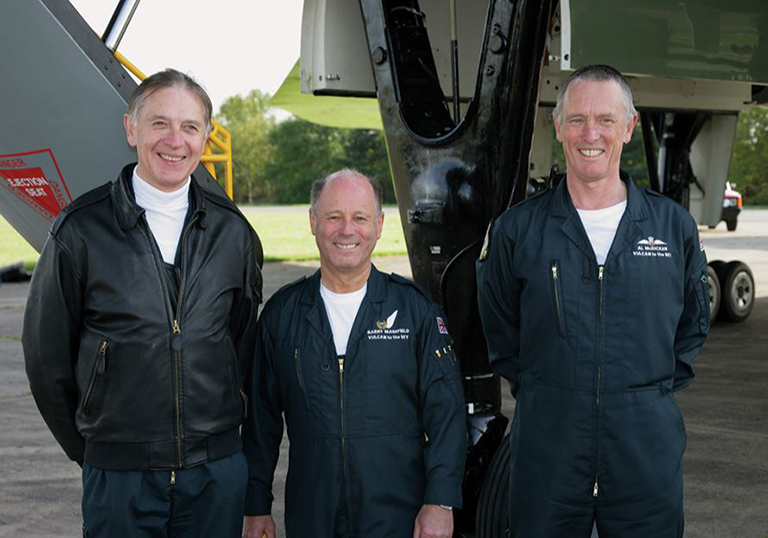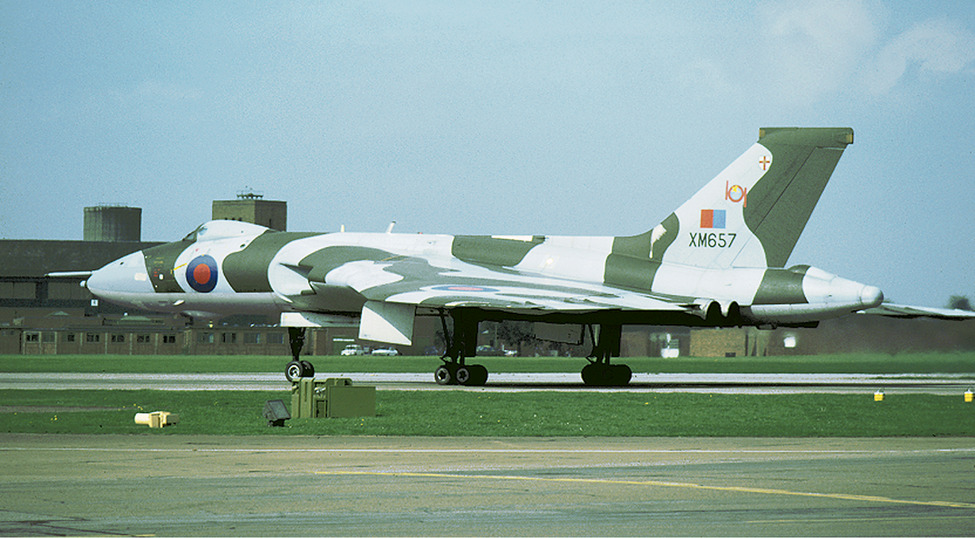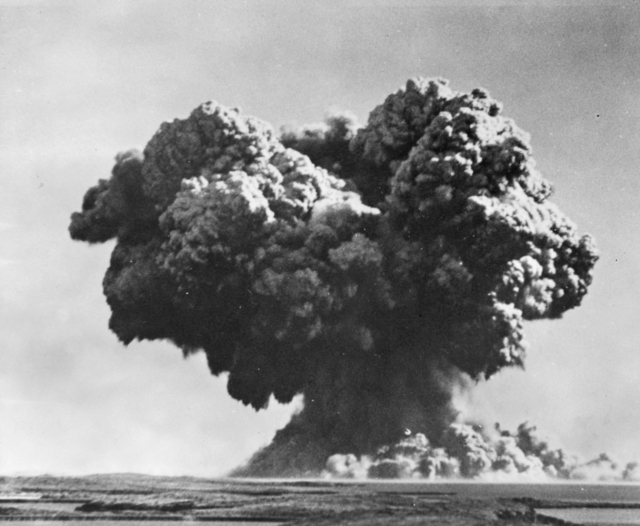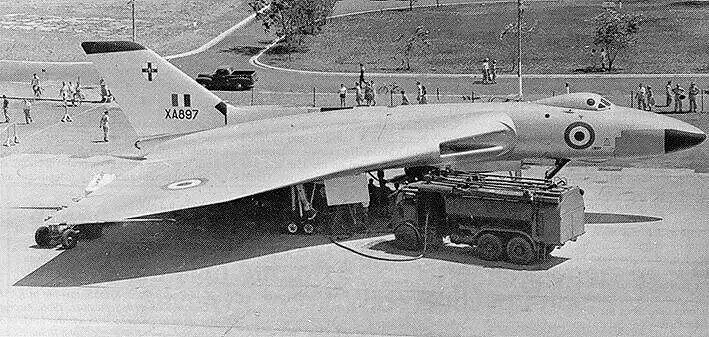
Ramblings from the AEO’s Panel – Part 16
Barry Masefield was the Air Electronics Officer (AEO) for Vulcan XH558 and had flown in this iconic aircraft for over 30 years, also being a

A complete change in the role of the V- Bomber came about during 1963, when it became clear that in the absence of a long- range stand-off weapon any attack, if it were to succeed, would have to be at low level under the radar, and the V-Bombers began to appear in a new camouflage paint scheme appropriate to this new mission profile. It is interesting to note that a camouflage scheme had been considered when the original specification was issued in 1947.
In November of 1964 RAF Cottesmore became the home for IX, 12 and 35 Squadrons, which achieved the move from RAF Coningsby with typical precision.
The last production Vulcan was XM657, which was delivered to No. 35 Squadron on January 14th 1965.
During 1966 and the years following Vulcans began to be interchanged between the units at Waddington, Scampton and Cottesmore, and it was at this time that the last of the B Mk.1As was taken out of service. This style of operating brought about a refinement of the Vulcan units, with No. 12 Squadron being disbanded on New Years Eve 1967, to be followed by No. 83 Squadron in July 1969.
The Scampton Vulcans equipped to carry the Blue Steel stand-off weapon were converted to the free fall bomber role as the Royal Navy’s Polaris submarines began to appear. This surplus of aircraft was soon found to be useful, as Vulcans were deployed to Cyprus to help strengthen the Central Treaty Organisation (CENTO). Nos IX and 35 Squadrons each sent four aircraft from Cottesmore during a very cold January-February 1969 to the warmer climate of RAF Akrotiri, the squadrons vacating Cottesmore completely by March 1969.
During the mid 1960s, the Vulcan Wing at RAF Cottesmore (IX, 12 and 35 Squadrons) was specifically nominated for a very high level role in addition to its low level task. The aircraft had been designed for high level flight and were expected to perform well. Once the aircrew were equipped and trained in the use of a pressure jerkin and ‘g’ trouser, which collectively composed a ‘poor man’s’ pressure suit, the aircraft and crew genuinely had the capability of flying safely above 50,000ft and completing the training requirement of one such sortie per month. This was unpopular, and avoided wherever possible, because of the need to wear all the extra uncomfortable pressure clothing and the task was largely unfulfilling.
“Whilst planning a sortie one day in 1966, we were asked by the Royal Navy if we could fly a simulated high level bomb run on RNAS Yeovilton and accept interception by Sea Vixens as a demonstration for a visiting Admiral. This unusual request was accepted as we would gain vital ‘Basic Training Requirements’ for a high level bomb run, fighter affiliation, ECM and, if we could persuade the Navy to go high enough, a mercifully short sortie above 50,000ft. Our deceptively casual request to the Navy about how high was ‘high’ was met with the hoped for response of ‘as high as you like’. Without more ado we prepared for the sortie and a few hours later, climbing hard, we turned for Yeovilton. The Sea Vixens were scrambled and endeavoured to intercept us. We listened on the radio to the increasing discomfort of the naval aviators as they realised that not only were we above 40,000ft but also above 50,000ft. In fact we were perched comfortably at 56,000ft watching the mayhem below as the Royal Navy tried to impress its Admiral. Suffice it to say that they were no threat to us and no interception took place. We, however, got all our ‘ticks in the box’ and came home well contented at the RN’s discomfort.”
Flt Lt David Bradford
Navigator, V-force (1964-1992)

Barry Masefield was the Air Electronics Officer (AEO) for Vulcan XH558 and had flown in this iconic aircraft for over 30 years, also being a

On 3 October 1952, Britain detonated their first atomic bomb. Due to the small size and high-density population of Britain there were no suitable sites

It had been 30 years in the making but finally on Sunday May 20th SAMA (South Atlantic Medal Association) ‘unveiled’ the memorial wall at the National

On Saturday 30 August 1952, history was made as Avro Type 698, VX770, took to the sky for the first time. It was the prototype